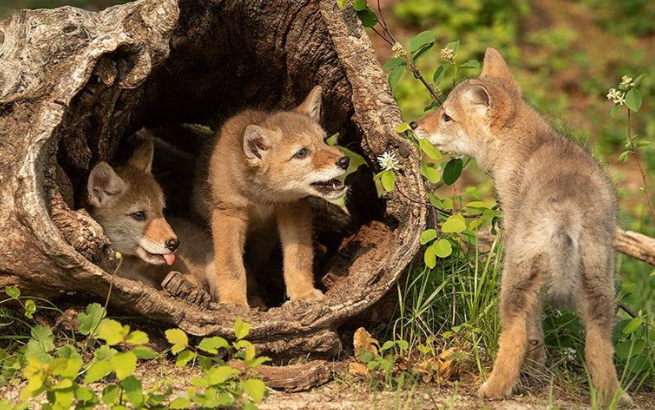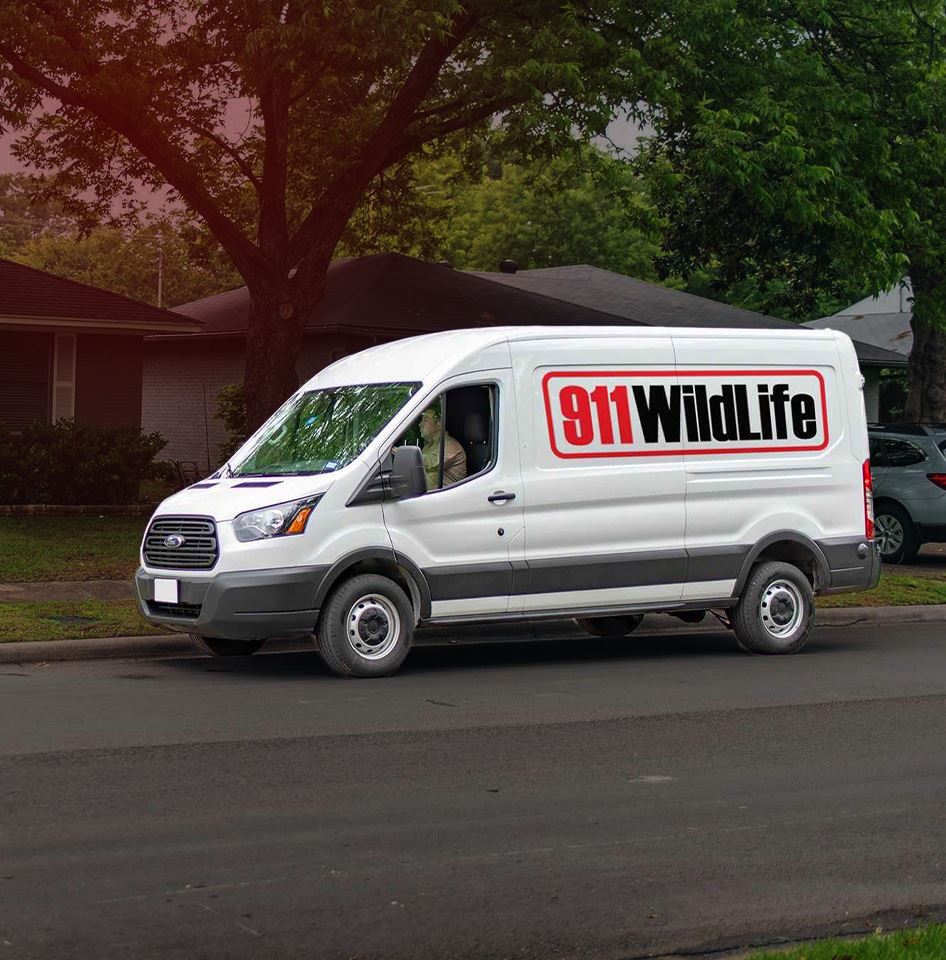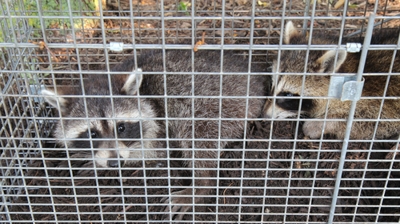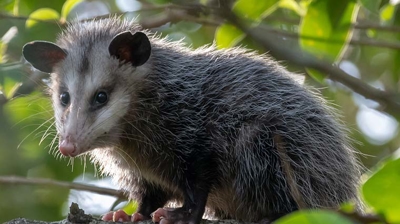
Coyotes

A dog may be a man’s – and woman’s – best friend, but we haven’t been a friend to most other canine species, especially the coyote (Canis latrans – which means “barking dog”). As one of the most persecuted animals in North America, coyotes have been subject to gunshots, traps, snares, poisons, and just about every other method for killing an animal you can imagine.
But in spite of efforts to exterminate the species, there are more coyotes living in North America today than ever before. These tricksters have outwitted us at every turn, expanding their range and returning to places where they had been extinguished. Coyotes have even learned to live in close proximity to human beings, within urban and suburban areas, and they are thriving.
Although coyotes are classified as carnivores, they are true omnivores, making use of an amazing variety of foods. In rural habitats, their diet consists mainly of rabbits and rodents supplemented with berries and other plant material. In urban habitats, coyotes will help themselves to pet food, as well as the pets themselves, garden produce, and food waste.
Given coyotes’ intelligence and adaptability, it’s little wonder that conflicts arise with their human neighbors. Luckily for both parties, a little patience and understanding go a long way toward preventing these problems.
People have traditionally addressed conflicts with coyotes by killing the offending animal or – because trapping methods are indiscriminate – any coyote who they could catch. But humane, lasting, and environmentally sound solutions will be achieved only by changing the habits we have that invite conflicts with the animals.
Coyotes can run as fast as 25 – 30 mph and can jump as far as 14 feet. They use 10 different sounds to communicate, not counting their familiar yapping howl. In shape and size, they are like medium-sized collie dogs, but their tails are round and bushy and are carried straight out below the level of their backs. Adults weigh between 15 – 45 pounds, are 40-60? long (including the tail), and their shoulder height is 15-20?.
Coyote pups live and play in the den until they are 6-10 weeks old, after which the mother starts taking them out hunting in a group. The family gradually disbands, and by fall the pups are usually hunting alone. Within a year, they go their own ways, staking out their own territories, marked with the scent of their urine.
Coyote Calls
Howling: Communicates with others in the area. Howling is also an announcement that “I am here and this is my area. Other males are encouraged to stay away, but females are welcome to follow the sound of my voice. Please answer and let me know where you are so we don’t have any unwanted conflicts.”
Yelping: A celebration or criticism within a small group often heard during play among pups or young animals.
Barking: Thought to be a threat display when a coyote is protecting a den or a kit.
Huffing: Usually used for calling pups without making a great deal of noise.
Family Life
A lone coyote howling at the moon has become an icon of the American West, but in reality, coyotes are not solitary by nature. They often mate for life and young coyotes will stay with their parents for a year or two if food is plentiful.
Mating occurs in early spring and the female begins to look for a secluded den site. The pups are born two months later and will be nursed for as long as seven weeks. The parents begin to regurgitate solid food for the young when they are about three weeks old. By nine months the pups are fully grown. They reach sexual maturity at one year but may wait until they are two years old to mate.
Coyotes can form packs consisting of a breeding pair and older offspring. Although the family will hunt and guard food cooperatively, coyote packs are less stable than those forged by wolves.
Frequently Asked Questions
There are coyotes in my neighborhood and I’m afraid they will attack my children or pets. What should I do?
Coyotes are generally afraid of people, and rarely attack humans. The best thing you can do for cats and small dogs is to keep them indoors – both for their own safety and for the safety of neighboring wildlife. Coyotes are opportunistic eaters and are attracted to places where they can find “easy pickings” of fruit, trash, or small animals such as mice and rats, etc. You can make sure you don’t attract coyotes to your house to taking several additional precautions:
Don’t keep pet food outdoors
Pick the fruit from your trees as soon as it ripens and keep rotten fruit off the ground
Keep trash can lids securely fastened and keep trash cans in your garage until collection day.
I saw a coyote during the day – doesn’t that mean it is rabid?
It is actually not unusual to see a coyote out during the day. Coyotes will venture out during daylight hours in search of food. They are opportunistic feeders, meaning they will hunt for food when the opportunity presents itself – regardless of whether it is day or night. Additionally, they eat squirrels, and squirrels are only active during the day.
Sometimes people are frightened because a coyote exhibits a “brazenness” that is alarming. This does not necessarily mean that the animal is sick. Coyotes may habituate to humans because of food sources being constantly available (i.e. cat food left on porches) or repeated contact with no negative consequences. You can teach a bold coyote to be wary of you and other people by using negative conditioning. Make loud, scary noises by banging metal pot lids together when the animal is nearby, or praying to the animal’s hindquarters with a hose.
Call 911 Wildlife if an adult coyote seen in the daytime is acting at all sick or showing abnormal behaviors such as partial paralysis, circling, staggering as if drunk or disoriented, self-mutilating, or exhibiting either unprovoked aggression or unnatural tameness. Keep people and companion animals away from the coyote.
Will coyotes attack my children or companion animals?
Neither the Centers for Disease Control and Prevention (CDC) nor local and state health departments have classified coyotes as a human safety risk. Coyote attacks on people are extremely rare; ironically, that is why they are highly publicized the few times they do happen. On the other hand, according to the CDC, over 330,000 people visit the emergency room each year for treatment of dog bite-related injuries, yet we do not usually banish these dogs from our homes. It is essential to put risk in its proper context, which is why, statistically speaking, the risk of coyote harm to humans is practically nil.
Most, if not all, of the few coyote bites that occur nationally each year, are directly related to coyotes being fed by humans, whether intentionally or not. As a result, it is important to take proactive measures and ensure that there are no human-produced food sources, such as garbage or cat or dog food, on your property that will entice coyotes with a quick and easy meal.
Although coyotes will occasionally prey on free-roaming cats and small dogs, the fear of coyotes attacking companion animals is greatly exaggerated. Many more dogs and cats meet the unfortunate fate of being struck by an automobile. Coyotes seek out the type of prey that will give them the greatest reward with minimal risk of injury to themselves. As a result, their favored prey includes small mammals such as rabbits, mice, rats, and squirrels, as well as human-produced food, such as garbage and cat or dog food. Coyotes also eat insects, fruits, and berries.
Do coyotes hunt in packs?
No. They do form small family groups that share territories but are normally solitary hunters, although they may sometimes hunt in pairs. Interestingly, howling is often a group exercise for coyotes. However, there is no need to be alarmed if you hear the distinctive coyote howl; it merely functions as a communication between individuals or as a method of staking out territorial claims.
How do I keep coyote out of my yard?
You can prevent coyotes from visiting your yard by taking a few simple precautions: keep your garbage in a secure container, and only put it outside in the morning of pick-up; do not put any meat scraps in compost heaps; do not leave any cat or dog food outside overnight; restrict the use of bird seed – coyotes are attracted to both the bird seed and the birds and rodents who use the feeder; pick up fallen fruit from underneath trees; and cut back brush around your property that provides cover for coyotes or their prey.
How do I keep coyote out of my chicken coop?
Small domestic livestock only makes up a small percentage of coyote diets, and are usually only preyed upon when other food sources are scarce. The only way to protect your chickens is to reinforce your chicken coop so the coyote cannot gain access. Heavy gauge welded wire should be used with another layer of finer mesh put over it to prevent coyotes (or other animals) from being able to reach through.
How do I protect newborn lambs and calves from coyote?
First, it is important to determine that coyotes are the animals to blame for any predation on livestock that you have noticed. Coyotes are scavengers, and the presence of their tracks around a dead animal does not necessarily mean they were responsible for the kill. A few signs of coyote predation include bite marks and bleeding on the head and neck of the dead animal, and signs of struggle such as trampled vegetation.
You can protect newborn livestock by confining pregnant animals, and their young, during the birthing season. You can also use guard dogs, llamas, or burros to protect your animals. Although not foolproof, fencing is the best option if you have large, open pastures. To effectively exclude coyotes, construct a fence at least 5 1/2 feet high, using 4? x 6? or smaller woven or welded wire fencing, and place a barbed wire across the top and bottom of the fence. The barbed wire will prevent the coyotes from being able to jump over or dig under the fence.
There is a coyote den near my property – what do I do?
People are often surprised to discover a coyote den near their property. The mere presence of a den is nothing to be concerned about. The only “problem” you may encounter is a period of several weeks when the kits are old enough to feel adventurous but are left unattended while the parents go off in search of food. The kits may look and act like puppies, and you may see them tumbling and romping in play throughout your yard. As cute as the kits are, it is important that you do not feed the kits or initiate contact, or the kits may lose their fear of humans, which will ultimately lead to their demise. Instead, you should bang metal pot lids together to create a loud noise, which will scare the kits and teach them to associate humans with negative stimuli.
If a coyote den absolutely must be moved out of an area due to impending danger to the animal (ex: the den is located near a construction site), harassment strategies will encourage the animals to abandon their den. Place dirty, smelly, sweaty socks, or rags sprinkled with a strong-smelling household cleaner such as ammonia, into the entrance to the den. This tends to make the coyotes uncomfortable and encourages them to find a new den site. However, keep in mind that it is not an easy task to find and excavate a suitable denning site, so they may stay at their original location for a lack of a better place to go.
Why can’t I just trap coyotes out of my area?
Many areas require a permit to trap coyotes, and few will be issued such a permit for the mere presence of coyotes in an area. That aside, the human killing of coyotes for predator control has ironically been a major factor in the increase of the coyote’s home range; as coyotes are persecuted in one area, their adaptability allows them to make use of a new area. Additionally, population “control” tends to have the opposite effect; coyotes compensate for the artificial reduction in their population by breeding at an earlier age and having larger litters. In addition, more young will survive because of the increase in available food sources.
It is much easier, and more effective, to simply remove any potential attractants from your property, which will keep coyotes at a distance, and realize that they are valuable members of your urban landscape.
Our Reviews
-
"Quick and excellent service."
911 Wildlife did a great job quickly resolving a raccoon problem. The entry was in a complex spot on the 2nd story of my ...
Harry A. -
"Conscientious and reliable service."
911 Wildlife was great to work with. They were conscientious, showed concern for our situation, and made a plan to address ...
Marti W. -
"Reliable & Friendly"
911 Wildlife was very prompt at returning my initial inquiry and getting me all the info I needed and at a good price. Reliable and friendly employees make the difference!
Katie K. -
"Excellent Service"
911 Wildlife is my immediate go-to for rodent control. Devin is the best. Don’t waste time finding the source of those pesky critters. Always fair pricing and excellent service. I highly recommend.
Kathleen C. -
"Very Professional"
Rob and his team arrived on time and installed grating, patched a hole, and installed a one-way outlet to evict a raccoon from my attic. They are professional and easy to work with. I recommend their services!
David M. -
"Great Job"
These people know how to deal with varmints in an informed humane way. They know animals and know how to manage them without harm to them or you. Call 'em now if you've got raccoons, possums, squirrels or even rats in the attic. They serve FORT WORTH as we
Claudia C. -
"Great job identifying and sealing entry points."
We had signs of wildlife in our attic, including snakes and rats. 911 Wildlife did a great job identifying and sealing entry ...
Chris M. -
"Great Service"
Our technician Ryan was the best. He was prompt and very thorough... He repaired the roof and flashing, and re-painted beautifully. The squirrels are gone! The service is effective and humane. I completely recommend!
Katherine G.

Recent Blog Articles
Our Tips & Tricks
-
 Who Do I Call to Get Wildlife Out of My Home?Read More
Who Do I Call to Get Wildlife Out of My Home?Read More -
 What is the Best Way to Get Rid of Rodents?Read More
What is the Best Way to Get Rid of Rodents?Read More -
 5 Tricks to Get Wildlife Out of Your HomeRead More
5 Tricks to Get Wildlife Out of Your HomeRead More -
 Common Entry Points: How Wildlife Enters Your Home and How to Seal ThemRead More
Common Entry Points: How Wildlife Enters Your Home and How to Seal ThemRead More -
 Understanding the Risks: Health Hazards Associated with Wildlife in Your HomeRead More
Understanding the Risks: Health Hazards Associated with Wildlife in Your HomeRead More -
Exclusion: The Safest Practice for Wildlife and YouRead More
-
 Trapping and Relocating Animals is Ineffective, Costly, and Inhumane – Here’s WhyRead More
Trapping and Relocating Animals is Ineffective, Costly, and Inhumane – Here’s WhyRead More -
 DIY vs. Professional Opossum Removal In DallasRead More
DIY vs. Professional Opossum Removal In DallasRead More



.2409240436213.jpg)









